Fourth edition’s first equivalent of the WFRP Companion – which was one of my favourite publications from the second edition line, largely on account of its magazine-style format providing copious amounts of lovely lore on a variety of topics. In fact, Archives is a little more focused than that, concentrating mainly (though not quite exclusively) on the non-human races of the Empire.
First however, we get a summary of the Grand Provinces of the Empire. This is explicitly the political state of the Empire at the beginning of the Enemy Within campaign, and my understanding is that it replicates the WFRP 1st edition status of the Empire; the idea being that the ructions of Empire in Ruins lead to changes resulting in the familiar Grand Provinces as detailed in the Warhammer Fantasy Battle game and 2nd edition’s Sigmar’s Heirs. This is a very reasonable idea, although reading stuff on Reddit it does seem to have caused a lot of confusion! But I like the idea of the Empire as a changing political landscape, not just preserved in amber. What is a bit weird is why it’s here. We could really have done with a brief overview of the Provinces (which is all this is) in the WFRP Core Book. Alternatively, it would make sense to have this in the Enemy in Shadows Companion. Quite why it belongs in Archives is beyond me, but there it is.
Anyway its all pretty decent. It reminds me of a edited-down version of the handful of pages each province got in Sigmar’s Heirs, and there’s nothing really different here. Reiklanders are posh; Stirlanders dislike Halflings and Vampires; Middenlands have a massive chip on their shoulder etc etc. It is interesting to have things laid out like this (e.g. Nordland is part of the Grand Province of Middenheim; Ostermark is part of Talabecland), and we get the usual smattering of adventure hooks that Cubicle 7 are so good at. It’s decent, and I found it interesting. Even if you were running a campaign solely in the Reikland (the default location for WFRP 4th edition) it would be useful to know what the cultural stereotypes of other Grand Provinces are.
Short and stout – Halflings in the Empire
Next we get Halfling Clans of the Reikland. Noticeably this is specific to the Reikland, even though a guide to The Moot is the very next chapter, so the implication is that there are other clans elsewhere. Anyway I wasn’t hugely impressed by this. Essentially it’s a short description of a series of clans, some with a fun representative NPC (or possible pregen PC for that matter). Each clan has its own Hat in classic Star Trek style, so you’ve got the ones who are good herbalists, the ones who sell pies, the ones with wanderlust, the noble Halflings. There are actually two clans of Criminal Halflings; the Lowhaven clan who are basically Halfling Mafia, and another clan who are basically dregs of society and thus end up turning to thievery. Very weirdly there are also Clanless Halflings, who are the source of Halfling beggars. I hate this; something I appreciate is how 4th Edition emphasises the difference between Halfling culture and Human culture, and one big element of this is how Halflings are super-communal and gregarious, and care enormously about their extended family. So the idea that there are Halflings who just get abandoned by Halfling society seems weird to me, and given that there’s already a “lowlives” Clan, I don’t know why these guys need to exist.
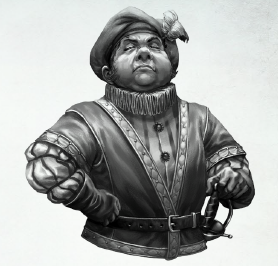
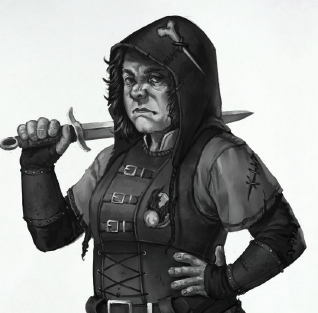
In any case, I’ve very mixed feelings about this chapter. On the one hand I do like getting more detail on this, the most neglected of WFRP PC races. The clans support the idea of extended family being Very Important to Halflings, and I do have a soft spot for some of the ideas here, like the Halfling Mafia, and the high and mighty very short nobles. On the other hand I do find it irritating that you have hundreds of Halflings who all feel the need to be pie sellers or archers just because of their family name, and I feel like these would be much better as examples of character concepts to demonstrate the commendable breath of possibilities in the race.
The Moot is the first genuinely fantastic chapter. This is an overview of the “Halfling province” of the Empire, something that I don’t think has been covered anywhere else previously. In fact, I don’t think Halflings have really been detailed before, at least not in 1st or 2nd Edition! In any case, this is a great information here, with brief information on the governance (such as it is), the three main regions (Auld Styrland, Aver Reach and Greenfields) and the largest settlements – with the usual welcome smattering of adventure hooks plus a decent (if not stellar) map of the region.
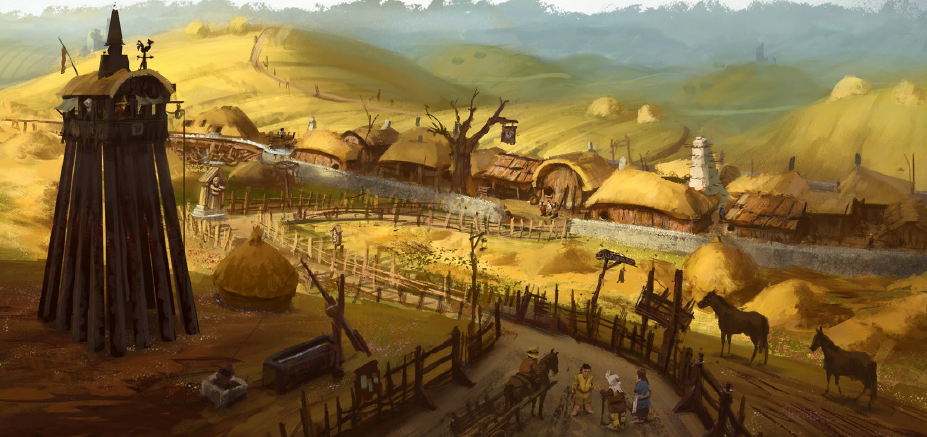
The 4th edition treatment is basically “The Shire, but with a more antagonistic relationship with humans”. So The Moot is a bucolic land of rolling hills and pastoral farmland with a culture of being laid back and easygoing. However their Stirland neighbours hate the inhabitants, since The Moot was created by taking some of their territory. Rather anachronistically, the Moot sees a lot of tourism (seriously?!) since it’s the most tranquil and beautiful part of the Empire, and the Halflings are very happy to both pranks and shamelessly fleece their Human visitors. The best element is the so-called “Grand Tour”, mention of which is Halfling code for “these Humans are ripe for fleecing; please play along with whatever crazy story I’m spinning”. This is great stuff!
Two very different types of Dwarfs
The volume now turns to Dwarfs, firstly with Imperial Dwarfs. This is a chapter detailed the Dwarves who live amongst the folk of the Empire, as opposed to those of the mountain realm. I feel like this is well overdue for treatment – I know plenty about the Dwarfs of the karaks, but I actually know almost nothing about the Imperial Dwarfs, save for what can be inferred from individual NPCs detailed here and there. Naturally, there are certain cultural differences between the two sorts of Dwarfs, what with the Imperial Dwarfs having lived separately for over two thousand years. So we get information about Dwarfish history with the men of the Empire; there’s an interesting detail that Dwarfs actually suffered persecution under two emperors (unusual given that the state religion specifically stipulates being respectful towards Dwarfs). We get information about their society, with elders and the council; detail of common careers; how runesmiths keep their abilities secret; and the complicated relationship between Imperial and Karak Dwarfs (the latter of which rather look down on the former as being ‘Manling Dwarfs’). Then there’s information on Dwarfish settlements; one rather neat detail is that Dwarf quarters in Empire cities have no windows on the ground floor of buildings on the edges of the quarter, and gates at the entrance, the better for defence. Finally we get a handful of sample Dwarf NPCs, including a witch hunter (a Dwarf witch hunter!) on the trail of a thinly veiled Blackadder and Baldrick, a spy and a rather neat immoral scholar. These serve to provide decent examples of unstereotypical Dwarfs.
To me this chapter brought across a strong sense of Imperial Dwarfs as a Warhammer analogue for long-settled foreign immigrants: living amongst a different people as a significant minority; a (justified) fear of persecution; distinctly different religious beliefs (with their emphasis on remembering ancestors); considering themselves citizens of a far-off land which they might never have visited. It’s not a comparison I’ve ever really noticed before, but it does fit Warhammer Dwarfs quite well. Regardless, I found this chapter interesting, and I think it would be very valuable for anyone wanting to play an Imperial Dwarf character, or for a GM running any adventure set in an Imperial Dwarf community.

We then turn to the other side of Dwarfs with Karak Azgaraz. This is the karak closest to Ubersreik, which has a longstanding relationship with the town, having built its mighty bridge and walls; several times over the centuries, they have helped rebuild the town after it has been devastated by war with Parravon or attacked by Greenskins. We get details on its political structure (King + Council of Elders), including some neat details about factions within the council. There are very brief details about the clans (not terribly exciting) and then a decent guide to the Karak itself, starting with how you approach it (including via skybridges if coming from the south – i.e. giant bridges spanning mountain peaks), and the inns en route; then the various levels of the fortress-city, followed by an exploration of the wider kingdom (an area similar in size to a minor province of the Empire). The information here is decent enough – and interesting to me, since I’ve never read any detail about a Dwarfhold before – but usefulness is absolutely crippled by lacking decent maps. All we get is the detail from the Reikland map provided with the Corebook, which basically shows where Karak Azgaraz sits in relationship to Ubersreik and Parravon and pretty much nothing else. It doesn’t show any of the locations mentioned on the approach to the Karak (like inns and skybridges, or labels for roads); it doesn’t show any of the locations in the Kingdom. It’s a crying shame; I kept flipping back and forth between the descriptions and the map, trying to work out vaguely where something was, but to no avail. And there’s no map for the interior of the Dwarfhold either. I confess to being deeply disappointed with this – I think a good map is an absolutely crucial feature when detailing a region or location.
That rather major omission aside, there’s some interesting stuff here. The adventure hooks are fairly pedestrian (a lot revolve around “the PCs have accidentally entered the Kingdom and need to do whatever they’re here for and get out before being accosted by Dwarf Rangers”) but there’s definitely mileage in the idea of a proactive Dwarf King, supported by younger Dwarfs but clashing with a Council dominated by more conservative-minded people.
Denizens of the Forest

Our final chapter takes us to the Laurelorn Forest, home of the Eonir. We get details on their history, culture and links with the Nordlanders, as well as a guide to the forest, blessedly featuring several maps (not especially pretty ones, but much better than nothing). One thing I’d not appreciated is that the Wood Elves of the Laurelorn (the Eonir) are quite distinct from those of Athel Loren (the Asrai) – slightly less isolationist and happier to engage with the nearby Humans (which accounts for why Wood Elves, while rare, are much less mysterious to Empire folk than Bretonnians). There’s some great information here that is all new to me, particularly the diplomacy: the Eonir have extremely strained relationships with Ulthuan, since the Phoenix King made the decision to abandon the Old World colonies during the War of the Beard, which is seen as a betrayal by the Wood Elves – and although this was three millennia ago, that is but a few generations past for them. (I love the fact that current queen of Laurelorn is the fourth it has ever had during its four thousand year history!!) Conversely, the Eonir have a surprisingly reasonable relationship with Naggaroth, with Dark Elf traders frequenting coastal settlements (as well as raiders, naturally).
I guess if you have kept up with the Wood Elf lore in the Warhammer battles game this is probably all familiar, but I don’t recall any of this stuff ever being detailed in WFRP before.
There’s also some interesting information about the hierarchy in the Laurelorn. There are three “birth kindreds” of Eonir: an upper class who are descendents of the original settlers from Ulthuan; a (much larger) middle class who are descended from the refugees who settled in the forest during the War of the Beard; and a lower class made up of those families who came to the Laurelorn since then. There is much condescension from one social class down to the next and the rulers are almost entirely upper class. I like the fact that the Eonir are not just one homogenous people; and I like the fact that distinctions are based on history going back literally thousands of years. However I’m a little unsure about a social class system that essentially mirrors the Empire class system (which itself is essentially the British one), since it does seem insufficiently alien for Elves. Anyway, its noted that the regular Wood Elf player characters in the corebook are middle class; playing upper class characters can be done using the High Elf character generation options; and playing lower class is basically the same as middle class, except with an extra talent whereby you are considered lower status than Wood Elves of other classes.
The Laurelorn gets some maps which I wasn’t hugely impressed by – they don’t really provide all that much detail. But they are way better than nothing.
And Finally
Finally, there is the appendix, containing four new careers. Essentially this is one proper career for each race – Shirewarden, Karak Ranger and Ghost Strider – plus a joke bonus career, the Halfling Badger Rider. The careers seem decent – I find it hard to compare 4th edition careers (given that each is essentially 4 careers in one, and understanding them properly means understanding lots and lots of different talents). Its certainly nice to have some unique careers for the races: while the Corebook contains several Human-only careers, I think the only non-Human unique career is the Dwarf Slayer. As has been pointed out on the Old World Podcast, the Badger Rider has the rather embarrassing flaw that nowhere is there a badger profile to be found, though I guess that’s not a hard thing to fix. Its a fun concept, and a silly career is perfectly fine to have a place in WFRP.
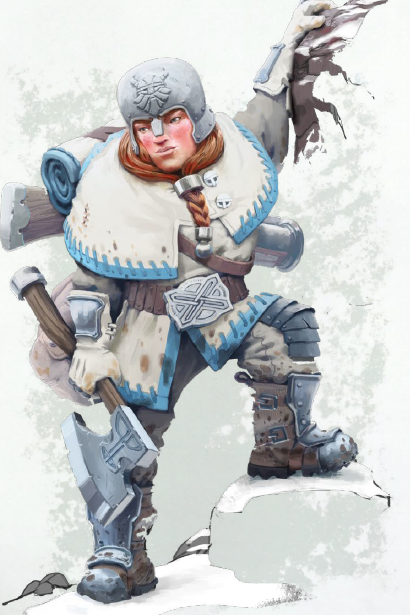
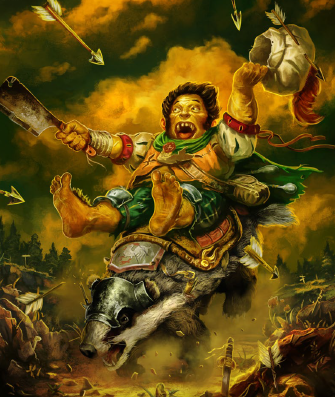
We also get a bunch of additional Halfling, Dwarf and Elf weapons. So far as I can see (without having done a great amount of analysis) these seem reasonably decent. Standouts are the Slayer Axe, which is just a massive upgrade on a regular 2-Handed Axe (way overpowered!); Dwarfish drakeshot ammunition and elvish starfire arrows (both of which inflict an Ablaze condition on a critical), and of course Nan’s Skillet for Halflings 🙂
All in all, I thoroughly recommend Archives of the Empire Volume 1. While the initial (excellent) chapter feels a little out of place, in general this is a very well-themed book, providing background and lore (and a few rules) on the non-human player races which WFRP has so often neglected. I can see all of this information being valuable for any player of a non-human character, and for any GM interested in delving more in non-human parts of The Empire.
Buy Archives of the Empire volume 1 on DriveThruRPG. This is an affiliate link so I receive a small payment for purchases made using it.
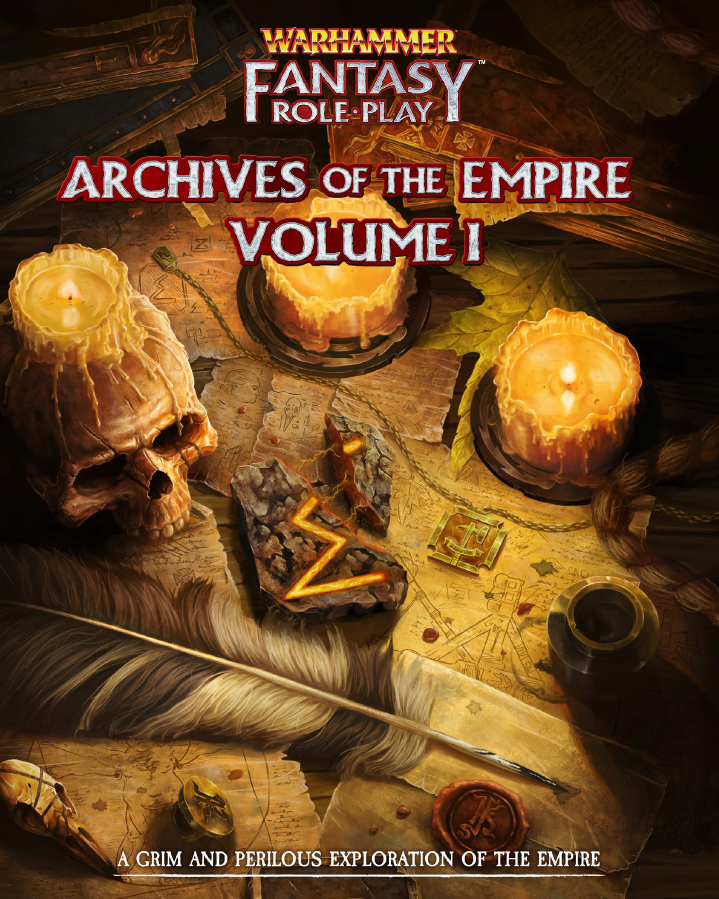
A very nice review and I would agree with most of your observations.
For me the weakest part of this supplement is without doubt the chapter about Dwarfs. I get confused anyway with the sudden relabelling of Ex-Pat Dwarfs as Imperial Dwarfs and still have to do mental gymnastics to make the switch in my head as Imperial Dwarfs have and always will be those dwarfs that remain part of the Dwarf Empire, not those who have abandoned it to its fate.
I also tend to rankle a bit when reading about the new ‘Snow White’ style dwarfs that just act like humans only shorter. So, personally I find a lot of this new material just a waste of ink. But I understand where it is coming from. I just think that the dwarf race deserves a lot better.
LikeLike
Thank you! I’m not really a dwarf aficionado and I was trying to recall what “Imperial Dwarfs” meant in the past – I just recall being a bit confused by the term!
But I feel like the chapter did a decent job of making Dwarfs in the Empire culturally distinct from humans, as well as from their Karak kin, which I appreciated. Clearly a lot more could be said on this. (Some day I might get the Stone and Steel supplement for 1st edition so I can see what that says.)
LikeLike
I tend to like to keep the alien species in WFRP as alien as possible so I use all the distinctions that make them as different as possible to humans. I like to assume that players who choose to play an alien race in WFRP do so because they want the challenge of roleplaying something that isn’t human and so I tend to use all of the non-human psychology rules and cultural differences I can find in the sources.
LikeLiked by 1 person
Hi! I just discovered your blog today, because of your Reddit post, and I think you’re awesome! I’ve read every post you’ve done so far. Keep up the great work! As an aside, I really desperately want to get the PDFs of Grapes Of Wrath, The Oldenhaller Contract & With A Little Help From My Friends, do you have them? I’d be very grateful.
LikeLike
Glad you like the blog and thanks very much for the encouragement!
I don’t actually have the pdfs of those adventures (I’ve got physical copies) but I think I can point you in the right directions:
With a Little Help From my Friends can be found in the “WFRP Fan Material”, linked from the sidebar of https://italwaysrainsinnuln.wordpress.com/
I think this is a direct link to the right folder (“Scenarios and Campaigns”): https://drive.google.com/drive/folders/0B78tEyor-_2DQ0xmTjdvY2Z1dFU
(There’s a 4th edition version in the Horned Rat Companion, which I haven’t read)
The Oldenhaller Contract is in the 1st Edition rulebook, the pdf is currently on sale (til the end of July) on DriveThruRPG. Link: https://www.drivethrurpg.com/product/228084/Warhammer-Fantasy-Roleplay-First-Edition-Core-Rulebook?affiliate_id=1915782
(that’s my affiliate link, if you prefer not to use it you can just go to DriveThruRPG and search for it directly).
The only one I’m not sure about is Grapes of Wrath, which was published in The Restless Dead for 1st edition… which isn’t on DriveThruRPG. Conversions were published in the adventure collection Plundered Vaults (2nd edition) and the Power Behind the Throne Companion (4th edition), both of which are on DriveThruRPG (and currently on sale). Link to Plundered Vaults: https://www.drivethrurpg.com/product/63111/Warhammer-Fantasy-Roleplay-2nd-Edition-Plundered-Vaults?affiliate_id=1915782
Hope that helps.
LikeLiked by 1 person
Would you consider reviewing things such as Ubersreik Adventures 2, Ubersreik Adventures 3, Rough Nights & Hard Days, or any of the Old World Adventures in the future?
LikeLike
Yep! I’ve got UA2 and Rough Nights plus a couple of Old world adventures. (I’m intending to do a post soon laying out my rough plans for the next few months)
LikeLiked by 2 people
I wish Cubicle 7 could release a product line that’s sane and makes sense. The current WFRP lineup is mostly random articles in random books. I guess the Art of Wat and Winds of Magic are properly thematic but the setting info is scattered everywhere. Plus we get a very random selection – for example, you can read minutea like ogres in the Empire but as far as I can tell, there’s nothing about Sigmarite justice and witch hunters?
As much as I like all the Archives books, this form of (dis)organisation in driving me crazy.
LikeLiked by 1 person
I have sympathy! It is a bit frustrating how stuff is scattered across various books. But I think Cubicle 7 had a tricky job since the Second Edition line was so comprehensive – we already had sourcebooks for the Empire (including stuff on justice) Bretonnia, Kislev, Skaven, Vampires, Chaos (including witch hunters), Religion, Magic etc, and it seems silly just to produce 4th edition versions of them when most of the fluff is going to be repeated. I suspect that why we’re seeing deep dives on religion spread out across various books (e.g. Myrmidia in Up in Arms, Rhya in Archives 3) – simply to avoid replicating 2e’s Tome of Salvation.
Conversely I think Cubicle 7 seem to be carving out a niche for 4e by producing sourcebooks on cities (Altdorf, Salzenmund) and regions (Sea of Claws, Lustria) which are all-new.
LikeLike
Yeah, I actually get the impression C7 has gone out of their way _not_ to publish any books that cover the exact same ground as any one 2E book. “Winds of Magic” is perhaps the closest thing to an exception here.
LikeLike
And it’s one of the products I’m least interested in precisely for that reason!
LikeLiked by 1 person
Pingback: The Shape of Things to Come – Ill Met by Morrslieb
Pingback: Three months! – Ill Met by Morrslieb
Pingback: 6 Months! – Ill Met by Morrslieb
Pingback: Interview: Anthony Ragan – Ill Met by Morrslieb